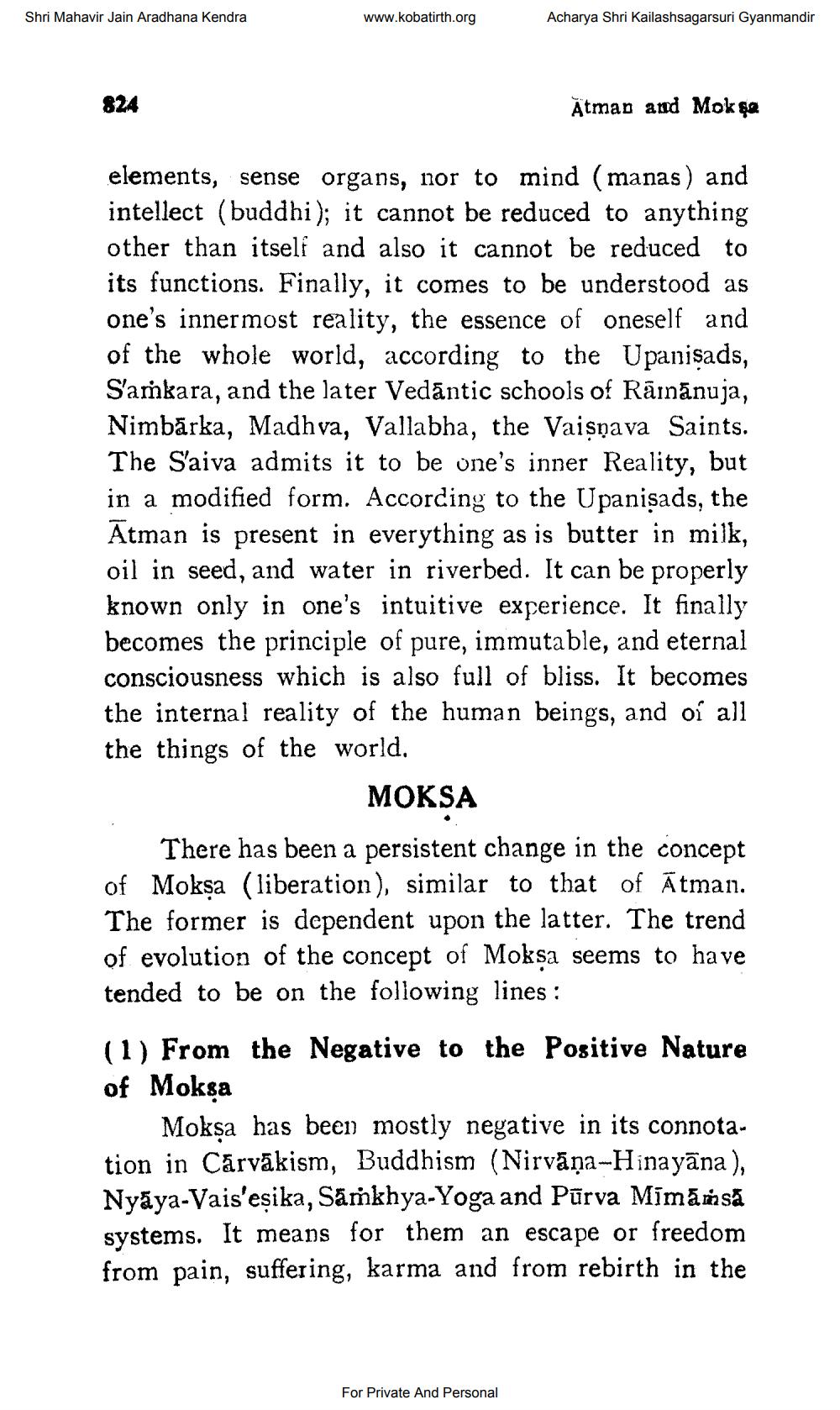________________
Shri Mahavir Jain Aradhana Kendra
824
www.kobatirth.org
Acharya Shri Kailashsagarsuri Gyanmandir
Atman and Mokşa
elements, sense organs, nor to mind (manas) and intellect (buddhi); it cannot be reduced to anything other than itself and also it cannot be reduced to its functions. Finally, it comes to be understood as one's innermost reality, the essence of oneself and of the whole world, according to the Upanisads, Samkara, and the later Vedantic schools of Rāmānuja, Nimbārka, Madhva, Vallabha, the Vaisnava Saints. The S'aiva admits it to be one's inner Reality, but in a modified form. According to the Upanisads, the Atman is present in everything as is butter in milk, oil in seed, and water in riverbed. It can be properly known only in one's intuitive experience. It finally becomes the principle of pure, immutable, and eternal consciousness which is also full of bliss. It becomes the internal reality of the human beings, and of all the things of the world.
MOKSA
There has been a persistent change in the concept of Mokṣa (liberation), similar to that of Atman. The former is dependent upon the latter. The trend of evolution of the concept of Mokṣa seems to have tended to be on the following lines:
(1) From the Negative to the Positive Nature of Moksa
For Private And Personal
Mokṣa has been mostly negative in its connotation in Carvākism, Buddhism (Nirvāṇa-Hinayana), Nyaya-Vais'eṣika, Samkhya-Yoga and Purva Mimāṁsā systems. It means for them an escape or freedom from pain, suffering, karma and from rebirth in the




